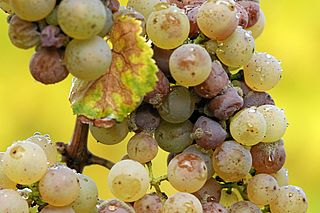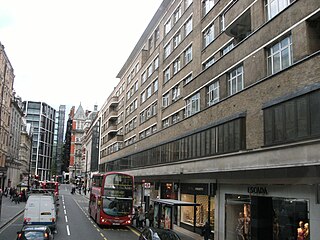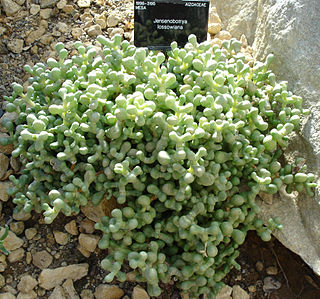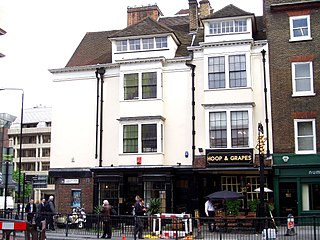
Noble rot is the beneficial form of a grey fungus, Botrytis cinerea, affecting wine grapes. Infestation by Botrytis requires warm and humid conditions, typically around 20 degrees celcius and above 80% humidity. If the weather stays wet, the undesirable form, "bunch rot" or "grey rot", adversely affects winemaking by disrupting fermentation and changing the taste, aroma, and appearance of the final wine Grapes typically become infected with Botrytis when they are ripe. If they are then exposed to drier conditions and become partially raisined, this form of infection is known as noble rot. Grapes picked at a certain point during infestation can produce particularly fine and concentrated sweet wine. Wines produced by this method are known as botrytized wines, and are considered a distinct category of dessert wines.

Zinfandel is a variety of black-skinned wine grape. The variety is grown in over 10 percent of California vineyards. DNA analysis has revealed that it is genetically equivalent to the Croatian grapes Crljenak Kaštelanski and Tribidrag, as well as to the Primitivo variety traditionally grown in Apulia, Italy, where it was introduced in the 18th century, and Kratošija in Montenegro. The grape found its way to the United States in the mid-19th century, where it became known by variations of a name applied to a different grape, likely "Zierfandler" from Austria.

Airén is a variety of Vitis vinifera, a white grape commonly used in winemaking. This grape is native to Spain where it represents almost a quarter of all grapes grown. As of 2017, Airén was estimated to be the world's fourth most grown wine grape variety in terms of planted surface, at 252,000 hectares, an increase from 218,000 hectares in 2004, where it held 1st place, although it is almost exclusively found in Spain.

Touriga Nacional is a variety of red wine grape, considered by many to be Portugal's finest. Despite the low yields from its small grapes, it plays a big part in the blends used for ports, and is increasingly being used for table wine in the Douro and Dão. Touriga Nacional provides structure and body to wine, with high tannins and concentrated flavors of black fruit. Jancis Robinson has compared its relationship with Touriga Francesa to the partnership between Cabernet Sauvignon and Cabernet Franc, the former providing structure, the latter filling out the bouquet.

Sloane Street is a major London street in the Royal Borough of Kensington and Chelsea which runs north to south, from Knightsbridge to Sloane Square, crossing Pont Street about halfway along.
Cayuga White is a mid-season ripening wine grape developed from crosses of the Vitis labrusca hybrids Schuyler and Seyval Blanc at Cornell University's New York State Agricultural Experiment Station in Geneva, New York. It is a hardy vine with some bunch-rot disease resistance. In warmer climates it should be picked at lower sugars to avoid overripe, sometimes labrusca-like, flavors; however this has not been observed in cooler climates such as the Finger Lakes and Pacific Northwest, where desirable, Riesling-type flavors are tasted in fully ripe Cayuga fruit. Picked at the proper time, it can produce a very nice sparkling wine with good acid balance, structure, and pleasant aromas, or a fruity white wine similar to a Riesling or Viognier. One advantage of Cayuga is that, if harvested unripe, it can still make a good wine, albeit one with more green apple flavors in that case.

Jensenobotrya lossowiana is the only species of genus Jensenobotrya, in the family Aizoaceae. It is a succulent plant endemic to Namibia. Its natural habitat is rocky areas. It grows at Dolphin Head in Spencer Bay where it obtains moisture from the saline mists. It is threatened by habitat loss.

Straw wine, or raisin wine, is a wine made from grapes that have been dried off the vine to concentrate their juice. Under the classic method, after a careful hand harvest, selected bunches of ripe grapes will be laid out on mats in full sun.. This drying will probably be done on well exposed terraces somewhere near the wine press and the drying process will take around a week or longer. Small scale productions were laid out on flat roofs; however, if this still happens, it is extremely rare nowadays.

The harvesting of wine grapes (vintage) is one of the most crucial steps in the process of wine-making. The time of harvest is determined primarily by the ripeness of the grape as measured by sugar, acid and tannin levels with winemakers basing their decision to pick based on the style of wine they wish to produce. The weather can also shape the timetable of harvesting with the threat of heat, rain, hail, and frost which can damage the grapes and bring about various vine diseases. In addition to determining the time of the harvest, winemakers and vineyard owners must also determine whether to use hand pickers or mechanical harvesters. The harvest season typically falls between August & October in the Northern Hemisphere and February & April in the Southern Hemisphere. With various climate conditions, grape varieties, and wine styles the harvesting of grapes could happen in every month of the calendar year somewhere in the world. In the New World it is often referred to as the crush.

Ruby Roman is a variety of table grape grown and marketed entirely in Ishikawa Prefecture, Japan. It is red in color and about the size of a ping-pong ball. The first Ruby Roman grapes went on sale in August 2008 for 100,000 Japanese yen (US$910) per 700-gram bunch, or $26 per grape. They are said to be the most expensive variety of grapes. In July 2016, a single bunch of Ruby Roman grapes, containing 26 grapes at a weight of about 700 grams, sold for 1.1 million yen in the year's first auction at a wholesale market in Kanazawa.
Papazkarası, also Papaskarası and Papaskara, is a Turkish grape variety and a Turkish wine grown in the Thrace region of Turkey. This variety was previously used to make a red wine blend with international grapes like Cinsaut, Cabernet Sauvignon, and Merlot. It is far more common now to see it as a varietal red, rose, or blanc de noir wine. The wine has an alcohol ratio between 11 and 13%, and an acidity range of 6 to 8 grams/liter. Papazkarası is also registered in Greece as Kara Papas. It is a very old Thracian variety with a wine making history dating back to before the Eastern Roman Empire. Kirklareli Uskup region is known as the best terroir for Papazkarası. Uskup terroir is based on Strandja decomposed granites, which gives very low yields and small bunches of grapes. Many vineyards, especially in upper Thrace close to Edirne, grow in old, head-trained/bush vines. In the fertile lowlands, the bunches can be much heavier, at around 500 grams per bunch. Veraison occurs between mid August and late August at Uskup. Maturity period is very late between mid October and mid November. Total Growing degree-day required is around 1.890 GDD. Papazkarası gives very high acidity to wines. In very ripe years, it can reach to 25 brix levels in the lowland Thracian vineyards of Uzunköprü.

The Bunch-of-Grapes was a tavern located on King Street in Boston in the Province of Massachusetts Bay in the 17th and 18th centuries. It served multiple functions in the life of the town, as one could buy drinks and meet friends, business associates, political co-conspirators. The facade of the Bunch-of-Grapes building featured an iconic sign: "Three gilded clusters of grapes dangled temptingly over the door before the eye of the passer-by."

The Park Tower Knightsbridge Hotel is a luxury 5-star hotel in London, England. It is situated at 101 Knightsbridge near Hyde Park, in the Belgravian district of the Royal Borough of Kensington and Chelsea.

The Grapes is a Grade II listed public house at 39 Fairfield Street, Wandsworth, London, England.

The Hoop and Grapes is a Grade II* listed public house at Aldgate High Street in the City of London.

Paxtons Head is a Grade II listed public house at 153 Knightsbridge, London.
The Grapes is a Grade II listed public house at 439 Liverpool Rd, Peel Green, Eccles, Salford M30 7HD.

The Tea Clipper was a Grade II listed public house at 19 Montpelier Street, Knightsbridge, London, SW7.

The Hoop and Grapes is a grade II listed pub at 80 Farringdon Street in the City of London.


















